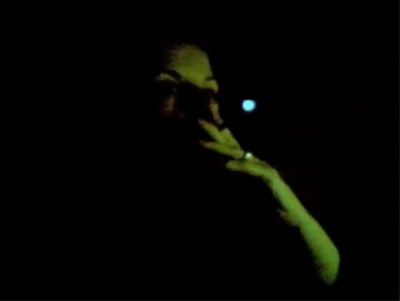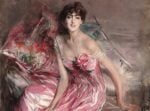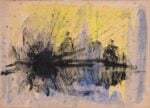Open Video

Open Video nasce dall’idea di open source, per la quale la successione dei video è liberamente accessibile e condivisibile da parte del pubblico.
Comunicato stampa
Space4235
Via Goito N.8, 16122 Genova
Opening 6 Novembre 2015 dalle ore 18:00
Aperto dal 7 Novembre al 29 Novembre
Orario: da giovedì a sabato dale 16:00 alle 19:00 e su appuntamento
Open Video a cura di Janne Talstad
Ayman AlAzraq
Andrea Bakketun
Juan Andres Milanes Benito
Kjetil Berge
Peter Booth
Lars Brekke
Anja Carr
Sara Christensen
Kristine Dragland
Anders Eiebakke
Toril Goksøyr
Tone Leksbø
Iselin Linstad Hauge
Bjørn Erik Haugen
Marte Hodne Haugen
Jason Havneraas
Damian Heinisch
Hilde Honerud
Henrik Plenge Jakobsen
Saman Kamyab
Jon Eirik Kopperud
Lars Laumann
Kaja Leijon
Linda Lerseth
Tonje Alice Madsen
Camilla Martens
Peter Mitterer
Christian Tony Norum
Richard Nygård
Jóhanna Ellen Ríkharðsdóttir
Malie Robb
Hans Christian Skovholt
Kristian Skylstad
Maria Sundby
Ellen Henriette Suhrke
Inga S. Søreide
Janne Talstad
Nina Toft
Kjersti Vetterstad
Monica Winther
Kristine Øksendal
Ragnhild Aamås
Débris
Kristian Skylstad & Janne Talstad
Dal 7 al 29 Novembre Space4235 ospita due progetti.
Open Video, a cura di Janne Talstad, e Débris.
Open Video nasce dall’idea di open source, per la quale la successione dei video è liberamente accessibile e condivisibile da parte del pubblico. Dèbris è un progetto nato dalla collaborazione tra Kristian Skylstad & Janne Talstad basata sulla ricerca fotografica in aree definite da devastazione e abbandono.
//
Open Video
Open Video derives from the idea of Open Source, which means the open video is a video that can be freely used, changed, and shared. Thus the program in Open Video can be changed by both the curator and the artists involved over time. The program stays the same, with alterations based on natural needs. The program becomes a vessel for content, and in the arbitrary of the diverse content curatorial challenges will become obvious, which again creates the need for curatorial narration in the program. Through my work at The National Academy of Art I followed the progress and evolution of many young artists at close range. Through my role as guider a natural involvement grew, and with my background as a video artist it was obvious that the linkage grew strong with students basing their practice on video. Still the Academy was a starting point, not a conclusion. I've been summarizing the tendencies in the field through the development of the medium, and the curatorial instructions to the different artists became clear; do your best or do what you need. Some has done both. One can say that this video program is the same as any, which is true in a sense, but it's different in the sense that it lacks a centre, an agenda and an intention. My aspirations as an artist is both aesthetic, political and dealing with the medium as such, so by mixing the program as a note sheet a videographic composition becomes apparent. The epic 3D generated video Deus Ex Machina meet poetry based As It Was Written meet the political drone movie Seagull Sequencing meet the 16mm epic Pylod a solitary girl wandering in Norwegian woods searching for sound in Resonances. The program bites its own tail, the identity of the artist becomes secondary, and the program turns into a joint effort of showing the variety of how to deal with and produce video. The program becomes a vessel, a toolbox, which changes through the different venues it's presented, in size, quality and geography. Already screened at ANX Oslo, soon presented at Space 4235 in Genoa, plan to be screened at venues in Svalbard and Russia. Hopefully the vessel and its content will be welcomed by venue after venue, and the idea of Open Video will be spread as an idea internationally. Anyone can generate their own Open Video sequence. The source code is open; generating a diverse landscape of work through the media of video. The artists share one thing; a total dedication to their own practice, though video might only be one of their tools, one way of expressing oneself. Video is easy to carry, because you only need a memory stick. I intend on being the messenger.
(JT)
Débris
Débris is a collaboration between Kristian Skylstad & Janne Talstad based on extensive photographic practices and research in areas defined by devastation and neglect. Skylstad has been working in Silesia, where the 2nd World War started, and the most described horrific brutality was executed, by both sides of the conflict. He has also been living and traveling in Cambodia for an extensive time, over many periods, studying the genocide there. Talstad has been working in the remains of the Stasi time in different area in Germany, mainly Berlin, and also the aftermath of the Bosnia war. While both these projects have been autonomous and executed independently, there is little doubt there is an obvious connection between both the motivation and the aesthetic of the photographic work. When Space 4235 invited both of us for a solo show we saw an excellent opportunity to join forces in a neutral place, where our work could communicate from a fresh starting point. Skylstads images can be read as a photographic Haiku poem. He understands his limitations when faced with bloody war history and failed communist industry, distilling whatever mysterious beauty is left. Here ignorance is used as a tool, limiting through framing and obscuring the content, using the transition light before everything fades to black. His expression consciously mimics the aesthetics of the classic Kodachrome finish of the Magnum photographers, thus also grieving a photographic tradition lost. Talstads approach is similar, but her motivation conflicts with Skylstad on the level of documentation. Her images are embracing the pragmatic photographic approach. These areas will soon be ruins, not havoc, debris or remains. Her practice is based on the conscience of remembrance, attempting to hold onto and remind the present of whatever is left of what used to be. Her pictures are pure archive, and the aesthetic touch is only underlining the importance of what is preserved through photography. Combining these two practices we hope to create both a friction and a harmony. The work is joint in the fact that both artists dwell and care, while both are detached, in opposite ways. Our work becomes one in meeting the audience together, and they separate simultaneously through this concourse. The debris is paused in time until forgotten, not yet ruins, and the images remains and reminds us. The true purpose of a photograph becomes apparent. In the time of Palmyra this is as relevant as ever.



